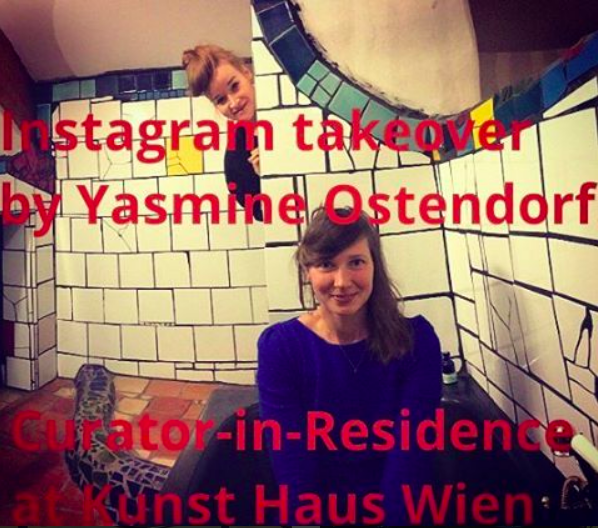The post Ben’s Strategy Blog: It IS what you do (not just the way that you do it) appeared first on Creative Carbon Scotland.
The Climate Change (Scotland) Act of 2009 places a duty on every public body to act:
1) in the way best calculated to contribute to delivery of the Act’s emissions reduction targets;
2) in the way best calculated to deliver any statutory adaptation programme; and
3) in a way that it considers most sustainable.
But what does that third duty really mean?
Most if not all public bodies, which include everything from local authorities, universities and NHS trusts to cultural NDPBs such as Creative Scotland and the National Galleries, are now reporting and working to reduce their direct carbon emissions and developing adaptation plans. But the third duty is less specific and, I think, less acted upon. Indeed the 2011 Guidance on putting the Public Bodies Duty into practice is much less detailed about what ‘Acting Sustainably’ means, partly I imagine because it will mean very different things to different organisations.
The first two Public Bodies Duties focus on the direct impacts and responses to climate change of the Bodies involved. They must consider their own carbon emissions and their own adaptation plans. But George Tarvit of the Sustainable Scotland Network, which works with Public Bodies to support them in their duties under the act, points out that the third duty provides an opportunity to look not at their operations, but at their functions: what they do, not how they do it. And to me, this is the more interesting area.
A core finding of my PhD research, working with His Majesty’s Theatre (HMT) in Aberdeen, is that whilst the theatre triggers hundreds of thousands of journeys each year by audience members, 70% of which are made by car, the theatre hadn’t previously been involved in transport planning in the region. Meanwhile Aberdeenshire Council, from where many of the journeys start, hadn’t previously talked to HMT about transport planning; nor had Stagecoach, which provides the relevant bus service. A similar situation recently came to light at a meeting convened by Transport Scotland of the Edinburgh Festivals and all the relevant transport providers. In both of these situations, the individual organisations were generally thinking about their own climate impacts and adaptation, but perhaps not how they were involved in, and could help influence, those of their partners and collaborators.
Working together
My project in Aberdeen brought together HMT, Aberdeenshire Council and Stagecoach to work together to overcome some of the barriers to travelling by bus which no single partner could control – things like the geography of Aberdeen or the coordination of bus services with show times. Whilst the project was only moderately successful in moving people from car to bus, it was acknowledged that these changes take time. What I hope will be its greatest success is that HMT will now see itself as an active partner in transport planning and the others will consider the theatre in their strategic planning. If so they will be able to have a much greater impact on theatregoers’ travel than if they all act individually.
There’s a link here, incidentally, with the Scottish Government’s ISM (individual/social/ material) model of behaviour change. Behaviour change usually focuses on the individual whose behaviour someone is hoping to change (the clue’s in the name). But the ISM model can (I’d say should, but that’s a different blog) be used to influence not individuals but those bodies, companies etc which control or dictate the ‘material’, whether that be the physical infrastructure or the laws, regulations and immaterial infrastructure that we operate within.
There is such a thing as society
The Public Bodies between them interact constantly with all of Scotland’s population. Their first two duties clearly focus on their own climate impacts and adaptation. When it comes to Acting Sustainably, I’d suggest it would be useful to think about how they can work together and with other partners to change the complex social system within which we all live (you might want to call this ‘society’) to help achieve those demanding national carbon reduction targets and adapt to the new world we are building.
Alongside the Act and the Guidance sits another document, the Low Carbon Scotland: Public Engagement Strategy. This was published at the tail end of 2010 and focuses on achieving the carbon reduction targets set by the Act. It stresses that:
Setting targets was just the start. Achieving them can only be done through a joint approach, with government; the private, public and third sectors; local communities and individuals all contributing. (p4)
Let’s consider the role of the cultural strategy
As I have argued before in these blogs, achieving these very demanding targets – which may well be increased in forthcoming legislation following the Paris Agreement – will require a massive change in the ways in which the people of Scotland live. In other words, a massive change in our culture in the widest sense. The Public Engagement Strategy only touches upon culture – in the narrower sense of what the Mexico City Declaration describes as ‘the arts and letters’ – very briefly. On p10 it states, ‘We will also consider the role of the cultural sector which has the capacity to educate, influence and stimulate debate.’ Whilst I would say this is rather a narrow vision of what culture is (there’s more to it than the cultural sector) and what it can do, it’s good to see it in there.
Of the Public Bodies, a number have a cultural focus: Creative Scotland, the National Galleries, Historic Environment Scotland, the National Museums, the National Records of Scotland and the National Library. The Scottish Government has seconded Creative Scotland’s very forward-thinking Director of Arts and Engagement Leonie Bell to write a Cultural Strategy. Wouldn’t it be interesting and exciting to see the Cultural Strategy take on the challenge of climate change directly and develop the role of culture in steering us towards a positive future? Wouldn’t it be interesting if the cultural NDPBs, as those bodies shaping our wider culture, were to take a lead and make building a low-carbon, equitable, post-climate changed society a part of their core purpose?
Image Credit: Ella Fitzgerald New York ca 1946. William P Gottlieb

Creative Carbon Scotland is a partnership of arts organisations working to put culture at the heart of a sustainable Scotland. We believe cultural and creative organisations have a significant influencing power to help shape a sustainable Scotland for the 21st century.
In 2011 we worked with partners Festivals Edinburgh, the Federation of Scottish Threatre and Scottish Contemporary Art Network to support over thirty arts organisations to operate more sustainably.
We are now building on these achievements and working with over 70 cultural organisations across Scotland in various key areas including carbon management, behavioural change and advocacy for sustainable practice in the arts.
Our work with cultural organisations is the first step towards a wider change. Cultural organisations can influence public behaviour and attitudes about climate change through:
Changing their own behaviour;
Communicating with their audiences;
Engaging the public’s emotions, values and ideas.
Go to Creative Carbon Scotland
Powered by WPeMatico



















 The ephemeral and highly specific nature of theatrical work means that most set and costume designs are only valued for the duration of the performance season (often a matter of days or weeks) before they are discarded. Designers are rarely contracted to consider the impact of their designs after opening night, or to build post-production possibilities into their creative processes. But does it need to be this way? Can the image of the skip as the final resting place of most theatrical designs instead be revised to find another endpoint where creativity and innovation can once again flourish? How might scenographers embrace cyclic rather than linear production processes to rethink the potential of art’s refuse?
The ephemeral and highly specific nature of theatrical work means that most set and costume designs are only valued for the duration of the performance season (often a matter of days or weeks) before they are discarded. Designers are rarely contracted to consider the impact of their designs after opening night, or to build post-production possibilities into their creative processes. But does it need to be this way? Can the image of the skip as the final resting place of most theatrical designs instead be revised to find another endpoint where creativity and innovation can once again flourish? How might scenographers embrace cyclic rather than linear production processes to rethink the potential of art’s refuse?
